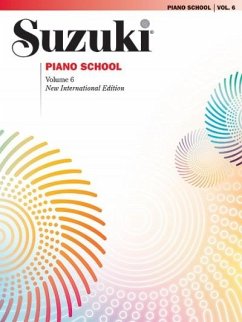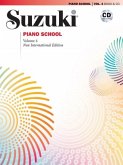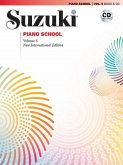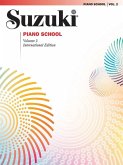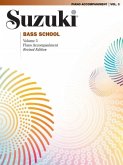The New International Edition of Suzuki Piano School, Volume 6, includes French, German and Spanish translations as well as a newly recorded CD performed by internationally renowned recording artist Seizo Azuma. Now the book and CD can be purchased together or separately. The contents have changed to include Mendelssohn's "Venetian Gondola Song," J. S. Bach's "Invention No. 8," Grieg's "Notturno," as well as "Spanish Dance No. 5," by Granados and "O Polichinelo" by Villa-Lobos. Daquin's "The Cuckoo" was moved to Book 5. The second and third movements of Mozart's "Sonata in C Major," K. 330, and J. S. Bach's "Little Prelude" have been permanently removed. Titles: Sonata in C Major (Allegro; Andante; Rondo: Allegretto), K. 545 (W. A. Mozart) Venetian Gondola Song, from Songs Without Words, Book 2 (Mendelssohn) Invention No. 8 in F Major, BWV 779, from 15 Two-Part Inventions (J. S. Bach) Notturno, Op. 54, No. 4 (Grieg) Sonata in D Minor, K. 9; L. 413 (D. Scarlatti) Sonata in C Major (Allegro moderato), K. 330, (W. A. Mozart) Spanish Dance No. 5 (Andaluza), from 12 Spanish Dances (Granados) O Polichinelo, from A prole do bebê no. 1 (Villa-Lobos).

